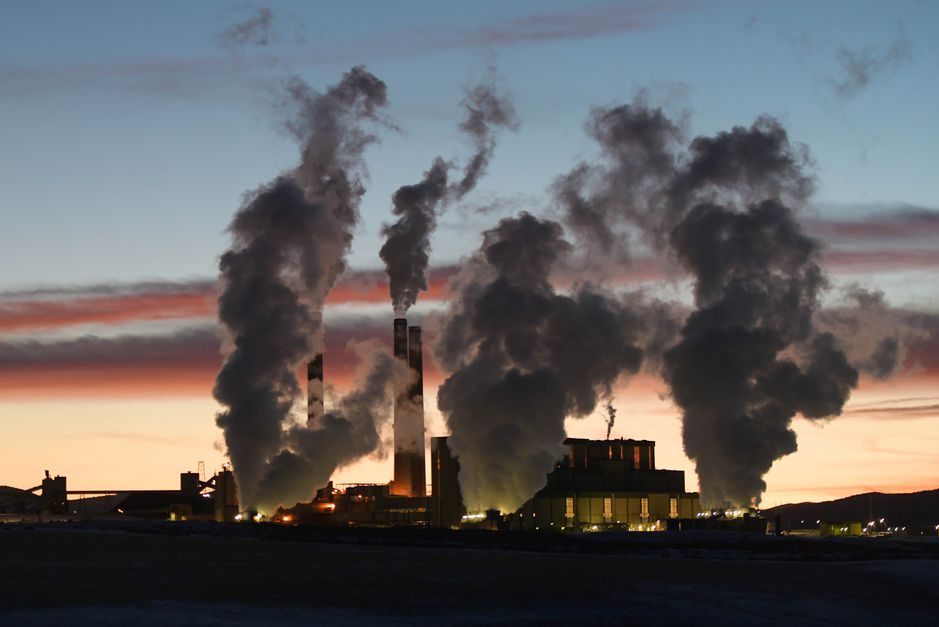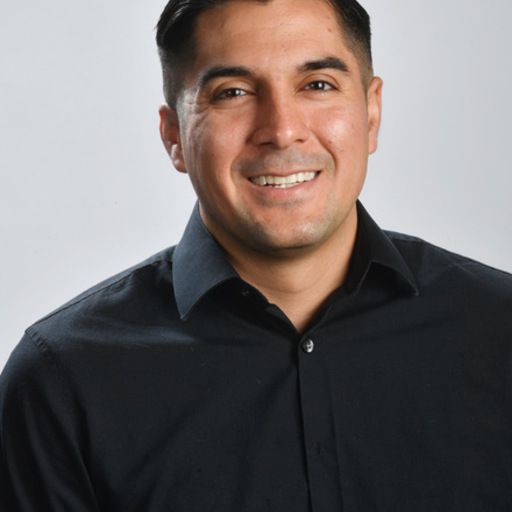
Even in the dark of night, chalky smoke from the coal power plant looms over Craig.
For generations, coal has been a constant in this northwestern Colorado city. But by 2030, the Craig Station stacks will go quiet as Colorado shifts to renewable energy.
Coal has fueled not only Colorado’s power needs, but also Craig’s economy. The plant’s closure will idle 600 workers and cost a slew of support jobs.
Leaders of Craig, a city about 40 miles west of Steamboat Springs, see a tight window of opportunity to build a new economic base, provide residents replacement jobs, and ensure the city’s survival.
They hope Colorado Northwestern Community College will play a key role, retraining displaced workers and building a diverse job base. College leaders have embraced the city’s optimism. But limited funding for the college threatens that bootstrapping vision.

And city and college leaders are gambling on a future that might never happen. Still, they remain hopeful even against daunting odds.
Changes have begun at the college, where enrichment classes like quilting workshops and CPR once helped draw in students. Now the institution wants to feature training and courses like paleontology, cybersecurity, and nursing, to attract both young and mid-career students seeking futures away from Craig’s past.
So far, some coal workers have enrolled in the hopes of new opportunities. But adding new programs and recruiting more students requires money and business partners that don’t currently exist, and there’s no clear plan yet to fill those gaps.
If the school and city fail to reach their goals, Craig could erode into a skeleton of itself. And as many who understand life on the frontier can attest, the end of a boom can carry the threat of disappearing altogether.
“There was a town where I grew up, not far from Livingston, Montana,” said Kathy Powell-Case, the dean of career and technical education at the community college. “It was a mining town. It’s no longer there. And I just think, is this becoming something like where buildings are here and there and nothing else? It just makes me wonder.”

A new, diverse Craig economy
For decades, coal has helped define Craig.
Residents have staked their livelihoods on it. Jobs can start at about $60,000 a year with no college education required. Everyone knows someone who has worked in the coal power plant or mines. That will soon end.
Tri-State Generation and Transmission Association Inc. announced in early 2020 that it will phase out the Craig Station to fulfill the state’s vision of reducing carbon emissions, with the first unit closing by 2025 and the plant shut down entirely by 2030. The plant opened in 1979.
Craig Station and the two nearby coal mines that feed it employ almost 10% of Moffat County’s workforce. The companies also account for 44% of total property taxes paid in the county.
Craig City Manager Peter Brixius sees the economic cliff ahead.
When he was hired in 2018, he said he felt the city of 9,000 residents needed to diversify. A big city for northwestern Colorado, Craig is the Moffat County seat and a modern oasis. It has the only two grocery stores in the county — a Walmart and City Market.
Two state highways intersect in Craig, although you’re more likely to stop for mule deer crossing the street than for traffic.
Tourism skips over the city for most of the year. In the self-proclaimed “elk hunting capital of the world,” the hunting season provides a momentary boom every fall.
Without coal, the future looks uncertain.
Gov. Jared Polis has said rural communities won’t be alone as the state moves to renewable energy sources.
Craig is among 11 Colorado communities whose tax and job base will erode by 2030 from the sunset of coal. The state’s Office of Just Transition created a plan that calls for the federal and state governments to support rural Colorado communities in redefining their future and recruiting business investment.
The plan, however, doesn’t have funding, and it’s not clear where new investment would come from, especially now with the COVID-19 pandemic straining communities and eating into tax revenues at all levels.

Planning a new economy
Not waiting for outside aid, Brixius and other city officials are outlining how to transition their economy. The city contracted with a firm specializing in long-term city planning.
“Luckily, it’s not open one day and closed the next,” Brixius said. The city can’t replace tax revenue from the plant and mines all at once. “The phasing — we really need it to happen that way because we can’t handle the shock.”
Officials hope to create a more tourist-friendly city. Dinosaur National Monument is a short drive to the west, and Craig has its own paleontological features, including a program and exhibit at the college. The city is beautifying its several-block downtown and will soon have an updated recreation area on the Yampa River — one of the last free-flowing rivers in Colorado.
In addition to tourism, the plan calls for embracing renewable energy such as solar farms, adding amenities like a recreation center, improving public transit across the region, and finding alternative uses for coal. Officials also see potential to extract other precious minerals for electronics and manufacturing.
Craig also will expand high-speed internet this year. Already, broadband connections have opened up the possibility of remote work for longtime residents and spurred hope that tech companies would consider locating there.
The city can tout its affordability: Housing is cheaper than on Colorado’s Front Range and in nearby Steamboat Springs. Craig’s proximity to the outdoors could also draw newcomers.
“We’re not walking around with our heads in the sand going, ‘Oh you know, it’ll all work out,’” Mayor Jarrod Ogden said. “We’re going to make it work.”
The plan also calls for promoting and expanding programs at Colorado Northwestern Community College. But industries such as solar don’t yet exist in the region. And adding college programs takes money, while new jobs in new fields might not materialize.

A big role for a small satellite campus
Justin Duzik, 42, has worked heavy machinery in the mines and at the power plant his entire career. But he won’t make it to retirement before the plant closes.
“With the uncertainty coming up, Tri-State energy has a program where they’ll pay for you to go to college,” Duzik said. “I kind of recently started doing that because of the unknown future.”
Duzik represents one of the first waves of workers to head to college for retraining. Duzik will earn two degrees, one associate degree in applied technology and another in business.
He’s hoping to work in solar energy if the industry takes hold in Craig, or help with machinery on ranches, or join a business that might relocate to the area — because he doesn’t want to leave.
Duzik grew up in Craig and spent most of his life there. He’s married with three boys.
“I love the open spaces,” Duzik said. “Not everybody likes the hustle and bustle of a city and this place gives you a chance to relax, enjoy the open country and not have the traffic.”
He hopes that the college will attract others. “That’s one thing that could really help our community is to get that education,” Duzik said, “and maybe some of these other companies or startups or something will come into our area because we do have a tremendously skilled workforce here.”

Community colleges have always molded to the area they serve, said Cecilia Orphan, University of Denver higher education assistant professor.
“Their mission is to really align themselves with whatever their community needs,” she said.
They could offer programs similar to their mission of retraining soldiers after World War II, or they could educate students who advance to four-year colleges.
For Craig to survive, the school needs to become more involved in the city’s future, said Sasha Nelson, the school’s workforce training and community programming director.
Nelson proudly adorns her office with an intricately stitched purple-and-white quilt she designed. She’s passionate about the enrichment classes like quilting that remain a popular staple.
But it was clear to Nelson that enrichment classes weren’t going to build Craig’s new economy. As the former Craig Daily Press assistant editor, Nelson said she’s always observed how fragile the city’s future could be.
The changes that Nelson has helped usher in provide a suite of short-term, skills-based training for residents in areas such as computer programming and health that will help workers gain new expertise.

Expanding options
And for those needing new training, the school has expanded its options.
This year the school added a cybersecurity program with a $500,000 grant from the Colorado Attorney General’s Office. The state sees information technology jobs as a growing industry that communities across the state can capitalize on.
But adding programs is expensive. The cybersecurity program is expected to cost $175,000 a year, and the more equipment and expertise a program requires, the more it costs to get started. A potential expansion of a flight training program, taught at the school’s main Rangely campus, could cost as much as $1.5 million.
Community colleges get the bulk of their funding from the state, which funds existing programs, not new initiatives. The Craig campus has an operating budget of just $6.2 million that includes costs like financial aid, administration, and insurance, according to the state.
Vice President of Student Services John Anderson said launching new programs requires buying equipment, developing courses, and hiring qualified instructors. Simply put, he said, “it takes funding to make sure we have all that.”

The school does have a template for building a program from the ground up and without any support. Two years ago, it created a paleontology program, which it continues to fund strictly from tuition.
One of few programs in the U.S. to provide hands-on training in dinosaur digs — and one of the few places in the world where you can feel the cold, smooth scales of a fossilized duck-billed hadrosaur skin — the paleontology program will graduate its first three students this year. Nonetheless, to grow the program, the school likely will have to do it on its own.
Not wanting to go the way of the dinosaur
In some ways, Craig is hoping its past will secure its future.
Dinosaurs may be one source of jobs and tourism, and so might the Wild West aura of a region where Butch Cassidy’s Wild Bunch was once said to roam the steppes and canyons.
The Museum of Northwest Colorado has commissioned a 16-by-10 foot fine art watercolor painting that’s expected to be the largest in the world and secure a spot in the Guinness World Records. The nearly completed painting by Israel Holloway features an almost life-sized cowboy on a horse.
These projects have the potential to draw in visitors and dollars, and the community college can train workers for a new tourism industry. Craig will survive if it can identify the driver of its next economic boom and plan for it, museum Director Dan Davidson said.
“All of the booms and busts over the years have been natural-resource driven,” said Davidson, whose family came to Northwest Colorado as homesteaders. “None of those have been managed. None of those have been manufacturing. None of those have been tourism.”
One successful business owner, Vic Updike, 52, said he understands the urgency to create a sustainable stream of jobs for Craig.
Updike had expected to go into farming in Craig as his father did. A downturn in the local economy in the 1980s made that impossible. To build a life in his hometown, Updike first had to leave. He studied heating, ventilation, and air conditioning at the Denver Institute of Technology.
He later moved back to Craig and then bought the 30-year-old Masterworks Mechanical business.
He’s expanded his business’s reach into Steamboat Springs and Baggs, Wyoming. The more money that comes from outside the city, the better, he said.
“I’m not special and I’m not smart,” Updike said. “I’m telling you this because when you’re looking at who replaces the plant, you’re not going to find another power plant. What we need is 15 more Masterworks, maybe not doing exactly what we are doing, but selling what we do in Craig so dollars from Denver or elsewhere come right here.”
His company partners with the community college every other year to offer advanced training for workers. Every week, he said he also holds sessions for new employees, many with no experience.
Craig will have to adapt to survive, Updike said. That’s what the city’s people have always done during hard times. He believes the town leaders, the college, and the people themselves will step up. But determination won’t matter if the dollars don’t arrive.
“There’s a reason why no dinosaurs are walking down the street,” Updike said. “When the diet changed, they couldn’t change, so they kind of just died off.”
This story is the second in a two-part series produced as part of the Higher Education Media Fellowship at the Institute for Citizens & Scholar. The Fellowship supports new reporting into issues related to postsecondary career and technical education.
Chalkbeat is a nonprofit news site covering educational change in public schools.









